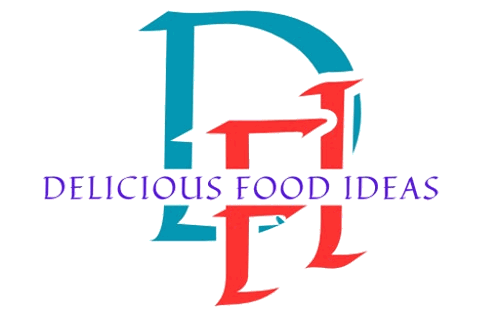Homemade vanilla extract recipe
Our homemade vanilla extract recipe was born out of a desire for purity and quality in our culinary endeavors. Drawing on the tradition of making food from scratch, these recipes offer a healthy alternative to commercially available extracts. By adding alcohol and vanilla beans, connoisseurs create a rich, aromatic essence that complements baked goods, desserts, and drinks. This DIY approach is popular among home cooks and bakers alike, as it not only guarantees great taste, but also allows for customization.
Homemade Vanilla Extract recipe:
Difficulty Level: Easy
Preparation Time: 10 minutes
Cooking Time: 0 minutes
Rest Time: 8 weeks minimum (for optimal flavor extraction)
Vegetarian
Cuisine: Global
Ingredients needed for Homemade Vanilla Extract:
- Ingredients:
- 6 to 8 vanilla beans (per cup of alcohol)
- 1 cup of hard alcohol (vodka, rum, bourbon, etc.)
- Optional Substitutes:
- Vanilla Beans: For vanilla, beans are not available, but you can use vanilla bean paste or vanilla extract, but the flavor may not be as strong or authentic.
- Hard Alcohol: The most commonly used alcohol for vanilla extract is vodka, but rum or bourbon can also be used. Note that the choice of alcohol will affect the final flavor profile of the vanilla extract.
Cooking Guidelines:
- Preparation:
- Gather materials and equipment.
- Using a sharp knife and cutting board, carefully split each vanilla bean lengthwise, leaving one end intact. This exposes the aromatic seeds inside.
- Cooking Instructions:
- Place the split vanilla bean in a clean glass jar or jar, making sure it fits snugly.
- Pour high-strength alcohol over the vanilla pods and let them soak completely. Make sure bottles and jars are tightly closed to prevent evaporation.
- Store bottles and jars in a cool, dark place such as a pantry or cupboard.
- Soak vanilla beans in alcohol for at least 8 weeks, shaking the bottle gently every few days to evenly distribute the flavor.
- After 8 weeks, your homemade vanilla extract will be ready for use. For a stronger flavor, soak for a few more weeks.
- When ready to use, strain the vanilla extract through a fine sieve or cheesecloth to remove any vanilla bean residue. Store the strained liquid back into a clean bottle or jar.
- Important Points:
- To prevent contamination, ensure that glass bottles and jars are clean and sterile before adding ingredients.
- To preserve the flavor of homemade vanilla extract, store it in a cool, dark place away from direct sunlight.
- Gently shake the bottle every few days during the infusion process to ensure that the vanilla flavor is evenly distributed throughout the extract.
Kitchen equipment needed to prepare homemade vanilla extract:
- Jar or bottle with a tight-fitting lid
- Vanilla beans
- Sharp knife or kitchen shears
- Cutting board
- Vodka or other alcohol content
- Measuring spoon or scale
- Funnel (optional)
- Labels and markers for labeling glasses
- Dark, cool storage room (pantry, cupboard, etc.)
Tips for perfecting the flavor of your homemade vanilla extract:
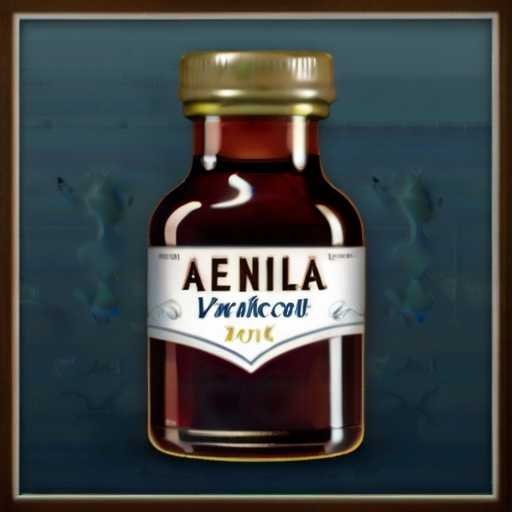
- Choose quality vanilla beans: The quality of the vanilla bean has a huge impact on the flavor of the extract. Look for grade A or B vanilla beans from a trusted supplier. Vanilla beans from Madagascar, Tahiti, and Mexico are popular.
- Use the right alcohol: The most common alcohol for making vanilla extract is vodka. Vodka has a neutral flavor without a strong vanilla flavor. However, you can also experiment with other spirits such as bourbon or rum to achieve different flavor profiles.
- Bean to Alcohol Ratio: To create a strong, flavorful extract, aim for a ratio of approximately 5 to 6 vanilla beans per cup of alcohol. This ratio can be changed to suit your preferences. However, please note that the more beans you use, the stronger the flavor will be.
- Crack and rub the beans. Before adding to the alcohol, split the vanilla pod lengthwise with a sharp knife and scrape out the seeds. This exposes more surface area of the beans to the alcohol, allowing for better flavor extraction.
- Patience is key: Homemade vanilla extract takes time to develop its rich aroma. Soak the beans in the alcohol for at least 6 to 8 weeks, shaking the bottle occasionally to aid the extraction process. Its flavor will get stronger the longer you soak it.
- Store in a dark place: To prevent light from affecting the flavor of vanilla extract, store it in a dark, cool place such as the pantry or cupboard. Brown glass bottles are also great for protecting the extract from light.
- Label and date your bottles: It’s easy to forget when you made your vanilla extract. Be sure to label each bottle with the manufacturing date. This way you’ll know when it’s ready to use, and you’ll be able to track how long it’s been around.
- Experiment with different beans and spirits: Don’t be afraid to get creative with vanilla extract. Try using different types of vanilla beans or experimenting with different spirits to create unique flavor profiles. Adjust the ratios accordingly and record the experiment for future reference.
Serving Suggestions: vanilla extract
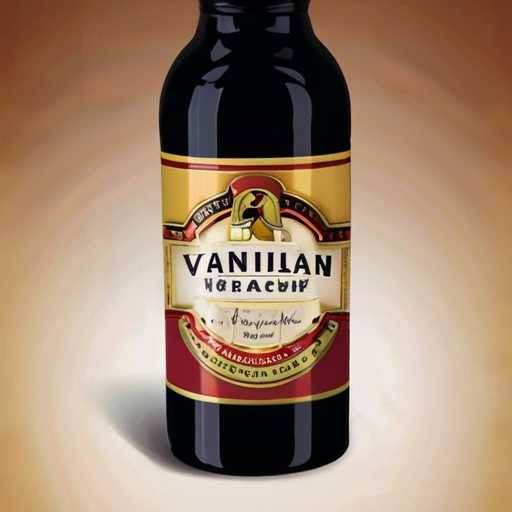
- Presentation:
- Pour homemade vanilla extract into a decorative glass jar or jar. The clear glass allows the rich amber color of the extract to shine, enhancing its visual appeal.
- Label the bottle with the manufacturing date and additional information such as: B. Type of vanilla bean used or extraction method used. This adds a personal touch to the extract and allows the recipient to understand the care that went into creating it.
- Servings:
- Homemade vanilla extract is best used in small amounts to flavor a variety of dishes. Place a small spout or dropper next to the bottle to facilitate administration.
- Encourage users to shake the bottle gently before use to redistribute the separated vanilla seeds and ensure a consistent flavor profile.
- Garnishes and Accompaniments:
- Vanilla Extract pairs beautifully with a variety of flavors and is a versatile ingredient in both sweet and savory dishes.
- For a sweet treat, consider adding vanilla extract to desserts such as cakes, cookies, pudding, and ice cream. It can also enhance the flavor of whipped cream, custard, and fruit salads.
- In savory dishes, vanilla extract adds depth and complexity. Use it to flavor chicken and seafood sauces, meat marinades, and salad dressings. It can also improve the flavor of certain vegetable dishes, such as glazed carrots or roasted sweet potatoes.
- Add elegance and flavor to desserts with a fresh vanilla bean or a pinch of ground vanilla powder.
Homemade Vanilla Extract Recipe Storage and Leftovers:
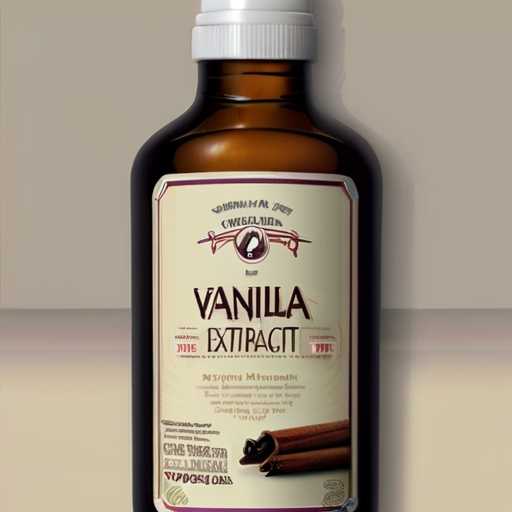
- Storage Instructions:
- Place homemade vanilla extract in a clean, airtight glass jar or jar. Dark-colored bottles are recommended to protect the extract from exposure to light, which can affect quality over time.
- Store bottles in a cool, dark place. B. Store in the pantry or cupboard away from direct sunlight and heat sources.
- To prevent evaporation and maintain freshness, be sure to close the lid tightly after use.
- Best before date:
- Homemade vanilla extract has an unlimited shelf life if stored correctly. However, the flavor may deteriorate over time, so in order to enjoy the best taste, we recommend consuming it within 1 to 2 years.
- Reheating Instructions (if applicable):
- If homemade vanilla extract solidifies or crystallizes when exposed to low temperatures, it can be easily reliquefied.
- Place a sealed bottle or jar containing vanilla extract in a bowl of warm water. Make sure the water level is below the lid to avoid water getting into the extract.
- Leave for 10-15 minutes to slowly melt the hardened extract with heat.
- Once liquid, shake or stir the extract briefly to ensure thorough mixing before use.
- Usage Tips:
- Do not expose vanilla extract to extremes or fluctuations in temperature as this may affect taste and effectiveness.
- It is normal for sediment to settle at the bottom of the bottle over time. Just shake the bottle well before use to spread the flavor evenly.
Homemade Vanilla Extract Nutritional Information:
- Calories: Approximately 12 calories per 1 teaspoon (5 ml)
- Fat: Vanilla extract contains virtually no fat and can therefore be ignored.
- Protein: Vanilla extract contains minimal protein and can be ignored.
- Carbohydrates: Approximately 1 gram per 1 teaspoon (5 ml).
- Fiber: Vanilla extract does not contain significant fiber and can be ignored.
- Please note that nutritional information may vary slightly depending on the specific ingredients and proportions used.
Health Benefits Associated with Homemade Vanilla Extract Recipe:
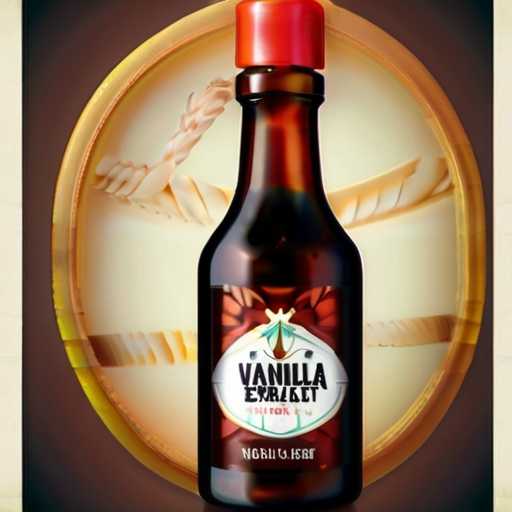
- Antioxidant Properties: Vanilla beans contain antioxidants that help neutralize harmful free radicals in the body, which can lead to cancer and heart disease. It might lower the chance of developing long-term conditions including cancer and heart disease.
- Improves Mood: The scent of vanilla is believed to have a calming effect and reduce stress and anxiety. This contributes to overall psychological well-being and a more positive mood.
- Digestive Aid: Some traditional medicine systems believe that vanilla can aid digestion by calming the stomach and reducing inflammation. Homemade vanilla extract can be used in desserts or added to drinks to promote digestive health.
- Anti-inflammatory properties: Vanilla contains compounds such as vanilloids that have anti-inflammatory properties. Incorporating homemade vanilla extract into your diet may reduce inflammation throughout your body and reduce symptoms such as arthritis.
- Improved sleep: Vanilla’s calming scent is also thought to promote relaxation and improve sleep quality. Adding homemade vanilla extract to warm milk or herbal tea before bed can help calm you down and improve your sleep quality.
- Potential for regulating blood sugar levels: Some studies have shown that vanilla may help regulate blood sugar levels, which may be beneficial for people with diabetes or at risk of developing diabetes. Suggests. However, further studies are needed to clearly confirm this effect.
- Natural Aphrodisiac: Vanilla has always been revered as an aphrodisiac and is believed to increase libido and sexual performance. Although there is limited scientific evidence to support this claim, vanilla’s pleasant aroma and taste can evoke a romantic atmosphere and stimulate the senses.
DIY and Professional Bakery: Homemade Vanilla Extract Recipe

DIY:
- Pros:
- Customization: By creating your own vanilla extract, you can customize the intensity and richness of the flavor to your liking.
- Cost-effective: At first glance, DIY vanilla extract may seem expensive because it involves purchasing vanilla beans, but in the long run it is cheaper than purchasing commercial extract.
- Satisfaction: Making something from scratch gives you a sense of accomplishment and satisfaction, especially if it tastes good.
- Ingredient Control: We have complete control over the quality and purity of our ingredients, ensuring they are free of additives and artificial flavors.
- Cons:
- Time consuming: Homemade vanilla extract typically takes weeks to months to develop its flavor, so it may not be ideal for those looking for immediate results.
- Sourcing Ingredients: Finding quality vanilla beans can be difficult and can be expensive depending on where you live.
- Storage Space: Storing vanilla beans and finished extract requires sufficient space, which can be a problem for those with limited storage options.
- Experiment: Perfecting your homemade vanilla extract recipe requires a learning curve, and you may not get the desired results on your first try.
- Budget Considerations:
- Although the initial investment in vanilla beans and alcohol may seem expensive, the total cost per ounce of homemade vanilla extract is significantly lower than that purchased in the store. Become.
- To reduce costs, consider purchasing vanilla beans in bulk or sourcing your vanilla beans from a trusted supplier.
- Reusing glass bottles and bottles to store extracts can also help save costs.
Professional Bakery:
- Pros:
- Convenience: Purchasing vanilla extract from a professional bakery or store saves time and effort as you don’t have to wait for the infusion process.
- Consistency: Commercial vanilla extract provides a consistent flavor profile, ensuring uniformity in baked goods and recipes.
- Wide availability: Vanilla extract is readily available at most grocery stores and bakeries, making it easy to obtain.
- No Preparation Required: No need to source ingredients, measure proportions, or wait for extracts to mature. Ready to use.
- Cons:
- Cost: Commercial vanilla extracts can be expensive, especially high-quality varieties made from pure vanilla beans.
- Additives: Some commercially available extracts may contain additives, artificial flavors, or preservatives that may not suit your personal preferences or dietary restrictions.
- Limited customization: Pre-made vanilla extracts offer few customization options when it comes to flavor intensity or bean type.
- Quality Concerns: Low-priced vanilla extracts may contain synthetic vanillin or be diluted with water, which will affect the overall quality and flavor of baked goods.
- Budget Considerations:
- When it comes to store-bought vanilla extract, quality comes at a price. So be prepared to invest more in premium varieties. If you use
- Vanilla Essence frequently, consider buying in bulk or in bulk packages to save money in the long run. Find
- discounts and special offers to buy Commercial Vanilla Extract at lower prices.
Budget-Friendly Homemade Vanilla Extract Recipe Options:

- Affordable Decorating Ideas:
- Reuse Jars: Reuse empty jars for pasta sauces, jams, pickles, etc. instead of buying new containers. Please clean thoroughly before use.
- Use affordable labels: Design and print your own labels using free online templates or software. Alternatively, you can use simple paper tags tied with twine or ribbon for a rustic look.
- Incorporate natural elements: Add a touch of nature to your presentation by using dried flowers, cinnamon sticks, or vanilla beans as decorative accents.
- Creative Solutions:
- Choose a Cheaper Alcohol: Traditionally made with vodka, put your own spin on the classic vanilla extract with cheaper options like rum or bourbon. I can.
- Split Vanilla Bean: Instead of using the whole vanilla bean, split it lengthwise to expose the seeds. This allows for faster extraction and maximizes flavor without using more beans.
- DIY Brewing Kit: Buy vanilla beans in bulk and create your own brewing kit by including a small bottle and instructions. Not only will this save you money, but it’s also a thoughtful homemade gift option.
Homemade Vanilla Extract Recipe Variations:
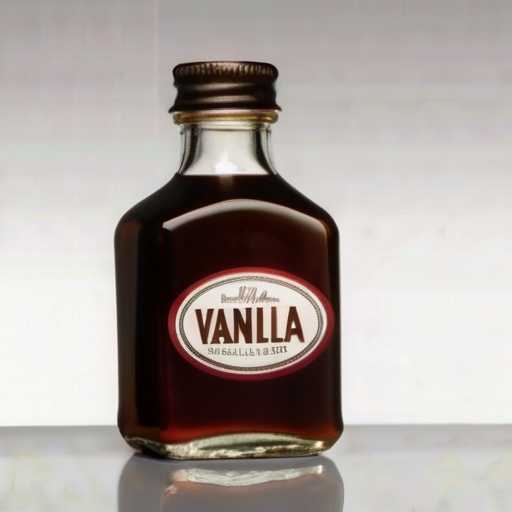
- Double Strength Vanilla Extract: For a richer flavor, use twice the amount of vanilla beans. This is perfect for recipes where you want the vanilla to really shine.
- Bourbon or Rum Infused Vanilla: Experiment with unique flavors by using bourbon or rum as a base instead of vodka. This adds depth and complexity to the vanilla extract.
- Mexican Vanilla Extract: While the beans are soaking, add a cinnamon stick and a few whole cloves to the vanilla beans to create a spicy, aromatic vanilla extract reminiscent of Mexican cuisine.
- Vanilla Bean Blend: Blends different types of vanilla beans, including Madagascar, Tahitian, and Mexican, for a complex flavor profile. Each type of bean brings unique properties to the extract.
- Vanilla Citrus Infusion: Add strips of citrus peel (such as orange or lemon) to vanilla beans when steeping them to give the extract a subtle citrus flavor. This goes especially well with baked goods and desserts.
- Vanilla Almond Extract: Add a few toasted almond slices to the vanilla bean while it’s steeping to make a delicious almond-vanilla hybrid extract. This is great for adding nutty flavor to recipes.
- Vanilla Coconut Extract: Vanilla beans and coconut flakes add a tropical twist to classic vanilla extract. It also goes great with dishes using coconut and tropical fruits.
- Vanilla Lavender Extract: Make a floral vanilla extract by adding a small amount of dried lavender to vanilla beans while they are soaking. Lavender can easily overpower other scents, so use it sparingly.
- Vanilla Bean Paste: Instead of making a liquid extract, blend vanilla beans with a small amount of vegetable glycerin to create a thick paste-like consistency. This is perfect for recipes that require visible vanilla flecks and a more concentrated flavor.
- Custom Flavor Blends: Get creative and try adding other spices and herbs to your vanilla extract, like cardamom, ginger, or even chili flakes for a spicy kick. Be sure to taste along the way to make sure the flavors complement each other.
Why Choose These Recipes

- Quality Ingredients:
- The foundation of every great vanilla extract recipe is its ingredients. Unlike store-bought versions, homemade recipes allow you to choose high-quality vanilla beans and alcohol. This focus on quality ensures a richer, more flavorful final product that enhances the flavor of any dish.
- Customization:
- When it comes to vanilla extract, there is no one size fits all. Homemade recipes give you the freedom to adjust the flavor profile to your personal taste. Whether you want to experiment with different types of vanilla beans or adjust the alcohol level, homemade extracts allow everyone to create a product that’s perfect for their tastes.
- Cost Effectiveness:
- Premium vanilla beans may seem expensive at first, but homemade vanilla extract recipes can lead to significant cost savings in the long run. With large quantities of vanilla beans and affordable alcohol options, homemade extract is a more budget-friendly alternative to always buying small bottles of commercial extract.
- Incorporate natural elements: Add a touch of nature to your presentation by using dried flowers, cinnamon sticks, or vanilla beans as decorative accents.
- Creative Solutions:
- Choose a Cheaper Alcohol: Traditionally made with vodka, put your own spin on the classic vanilla extract with cheaper options like rum or bourbon. I can.
- Splitting vanilla beans: Instead of using the whole vanilla bean, split it lengthwise to expose the seeds. This allows for faster extraction and maximizes flavor without using more beans.
- DIY Brewing Kit: Buy vanilla beans in bulk and create your own brewing kit by including a small bottle and instructions. This not only saves money, but is also a thoughtful choice for a homemade gift.
Homemade vanilla extract recipe with vegan alternatives and gluten-free options:

- Ingredients:
- 5-6 vanilla beans
- 1 cup vodka (for traditional version)
- Gluten-free 1 cup vodka or rum (for gluten-free option)
- 1 cup vegetable glycerin (for vegan option)
- Clean glass jar with a tight-fitting lid
- Instructions:
- 1. Prepare the vanilla beans:
- Cut each vanilla with a sharp knife. Stretch the beans lengthwise, leaving about 1 inch at the top so they stick together.
- If the beans are too long for the jar, cut them into pieces that will fit in the jar.
- 2. Add the beans to the jar:
- Add the split vanilla bean to the clean jar.
- 3. Add alcohol or glycerin:
- For the traditional version: Pour the vodka or gluten-free vodka/rum over the vanilla bean until the vanilla bean is completely covered.
- For the vegan version: Pour in the vegetable glycerin until the vanilla pod is completely covered.
- 4. Close and store.
- Close the jar tightly.
- Store the jar in a cool, dark place such as a closet or pantry.
- Shake the bottle gently about every week to bring out the aroma better.
- 5. Wait for infusion:
- Soak vanilla beans in alcohol or glycerin for at least 8 weeks. However, longer times are better for intensifying the flavor.
- 6. Strainer and Bottle (Optional):
- After the steeping time, you can strain the vanilla bean if desired, or leave it in the glass for a stronger flavor.
- If you choose to strain, pour the extract through a fine strainer or cheesecloth into a clean bottle and store.
- 7. Labels and Directions:
- Label homemade vanilla extract with the manufacturing date and store in a cool, dark place.
- Homemade vanilla extract is more effective than store-bought, so use homemade vanilla extract in recipes that call for it and adjust the amount to your taste.
- 1. Prepare the vanilla beans:
Homemade Vanilla Extract Recipe Notes:

- Quality Issues: When making vanilla extract, choose high-quality vanilla beans. Look for beans that are plump, oily, and have a strong flavor. Vanilla beans from Madagascar, Tahiti, and Mexico are popular choices, each with a unique flavor.
- Alcohol Selection: The base alcohol used for vanilla extract traditionally includes vodka, bourbon, or rum. To properly extract the vanilla flavor, choose unflavored alcohol with a minimum alcohol content of 35-40% (70-80%).
- Bean to Alcohol Ratio: The standard ratio for making vanilla extract is approximately 5 to 6 vanilla beans per cup (240 ml) of alcohol. However, you can adjust this ratio to make the flavor stronger or milder, if desired.
- Split the bean: For maximum flavor extraction, cut the vanilla bean lengthwise to expose the tiny seeds inside. This allows the fragrance to penetrate the alcohol more easily.
- Patience is key: Homemade vanilla extract takes time to develop its rich aroma. Soak vanilla beans in alcohol for at least 6 to 8 weeks, shaking the bottle occasionally to even out the flavor. For best results, he ages it for several months, sometimes a year, to achieve bold, complex flavors.
- Storage and Shelf Life: Store homemade vanilla extract in a cool, dark place out of direct sunlight. If stored properly, it will last indefinitely, with the flavor evolving and improving over time. If using an extract, you can add more alcohol to help soak the beans.
- Reuse beans: Do not throw away used vanilla beans after straining the extract. Rinse with water, pat dry, and let air dry completely. These beans can be used to make vanilla sugar by burying them in sugar jars or adding them to homemade vanilla syrup for coffee and cocktails.
- Gift Idea: Homemade Vanilla Extract makes a thoughtful and personalized gift for friends and family who love baking. Each bottle is packaged in a decorative bottle, labeled with the date of manufacture, and includes a handwritten note with serving suggestions and recipe ideas.
FAQ for Homemade Vanilla Extract Recipe:
- What ingredients do I need to make homemade vanilla extract?
- To make homemade vanilla extract, you need vanilla beans and alcohol. The most commonly used alcohol for vanilla extract is vodka, but you can also use rum or bourbon for added flavor.
- How many vanilla beans should I use for one glass of alcohol?
- A general rule of thumb is to use 3 to 5 vanilla beans per cup of alcohol. However, this depends on your personal preference for vanilla strength. The more beans, the stronger the flavor.
- How much time does it take to prepare vanilla extract at home?
- Homemade vanilla extract typically takes several weeks to steep properly. We recommend soaking vanilla beans in alcohol for at least 6-8 weeks, shaking the bottle occasionally to redistribute the flavor.
- Can extracted vanilla beans be reused?
- Yes, extracted vanilla beans can be reused. Once you have used the beans to flavor your extract, rinse them and dry them completely. You can use it to make vanilla sugar or homemade vanilla paste.
- How should homemade vanilla extract be stored?
- Keep homemade vanilla extract out of direct sunlight and in a cool, dark area. A brown glass bottle is ideal for storing vanilla extract as it protects it from light. Homemade vanilla extract has an indefinite shelf life if stored properly and actually improves in taste over time.
In summary, making homemade vanilla extract provides a great combination of simplicity and quality, allowing for complete customization and great taste. By steeping high-quality vanilla beans in alcohol over time, you can create a product that is superior to commercial vanilla beans and can enhance both the taste and aroma of your dishes. With just a few ingredients and a little patience, homemade vanilla extract oozes the fun of DIY cooking adventures and enhances dishes with its rich, nuanced essence.
